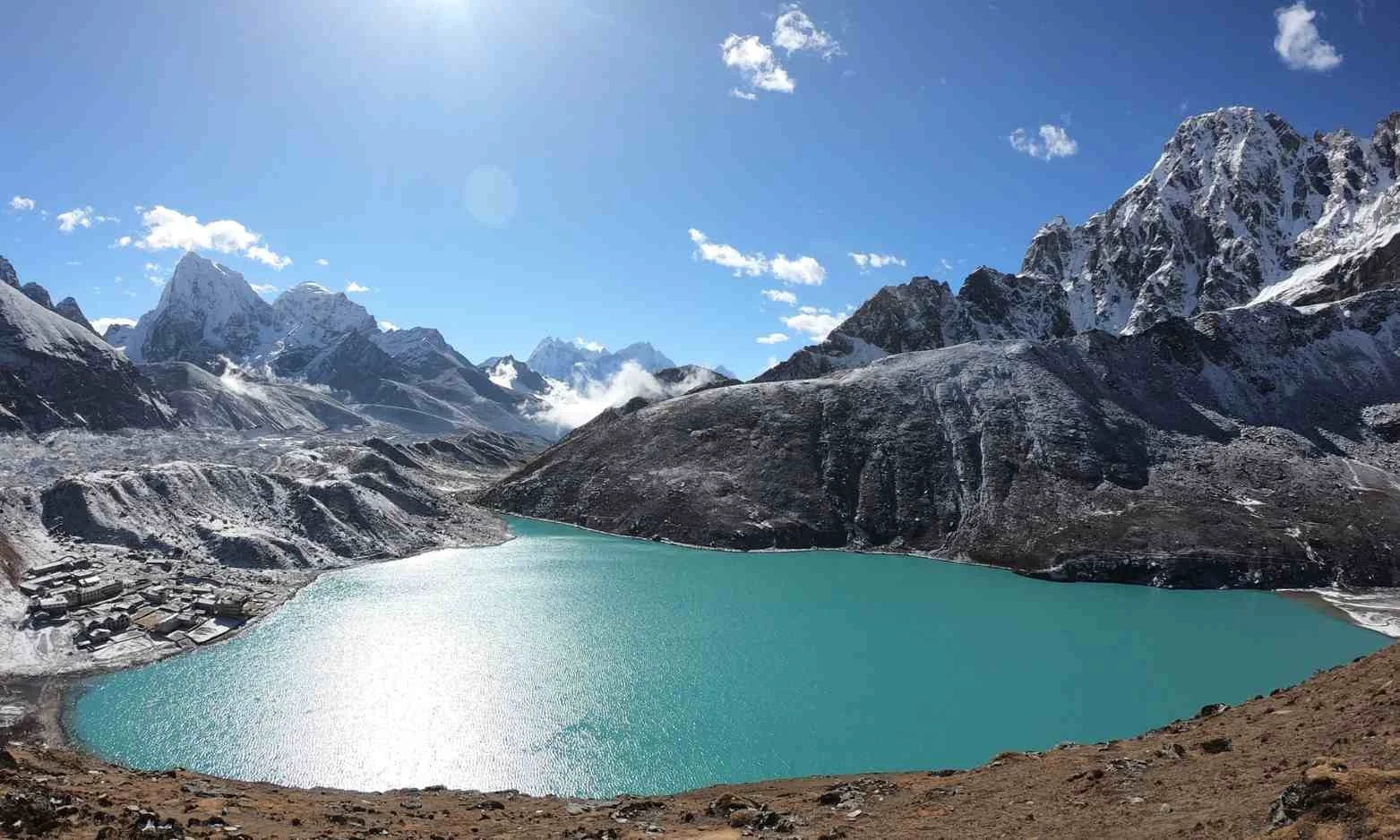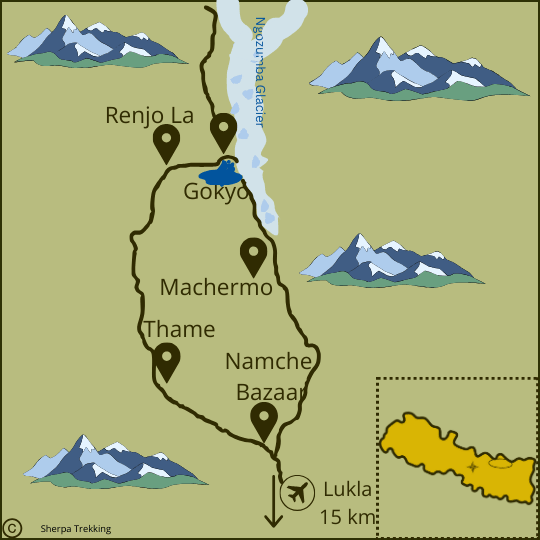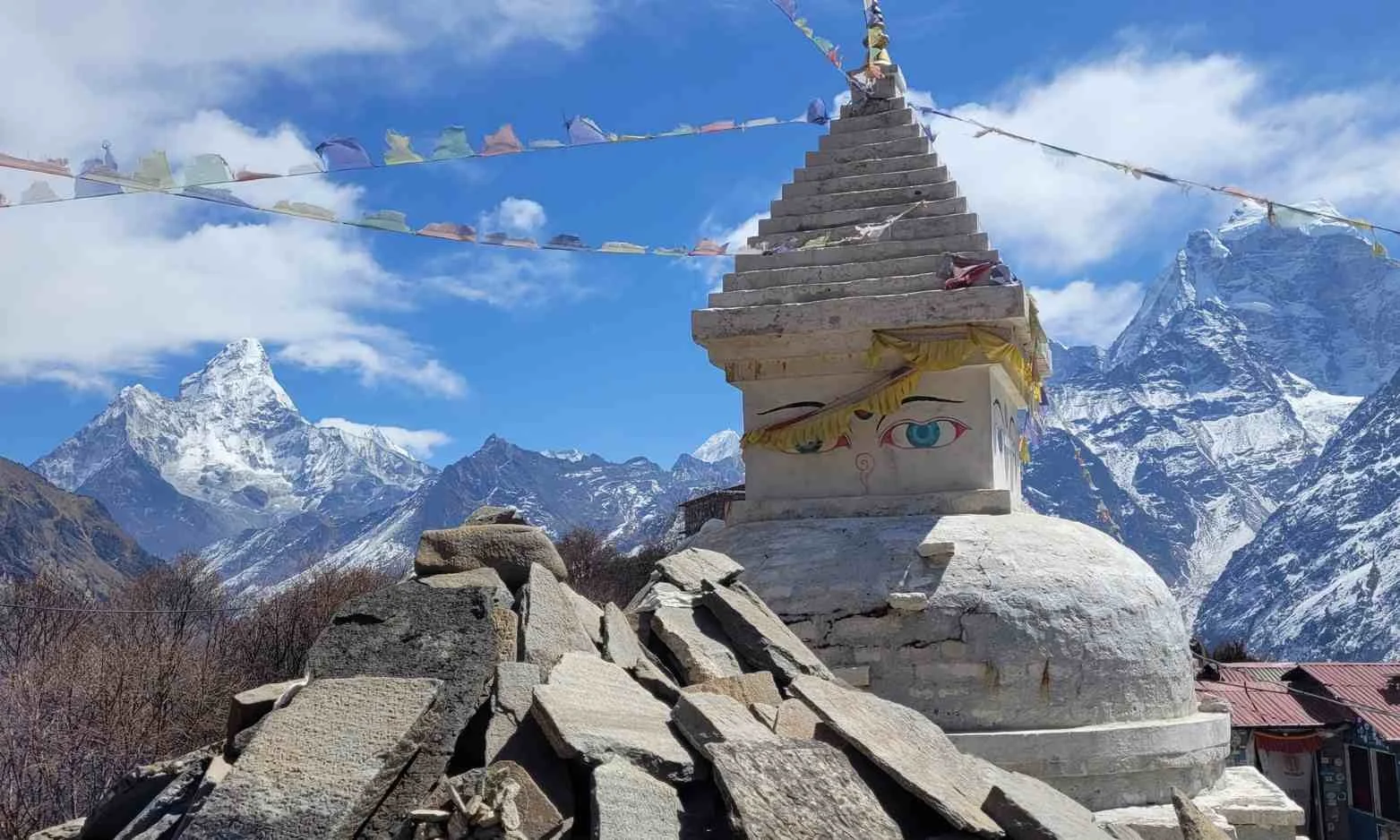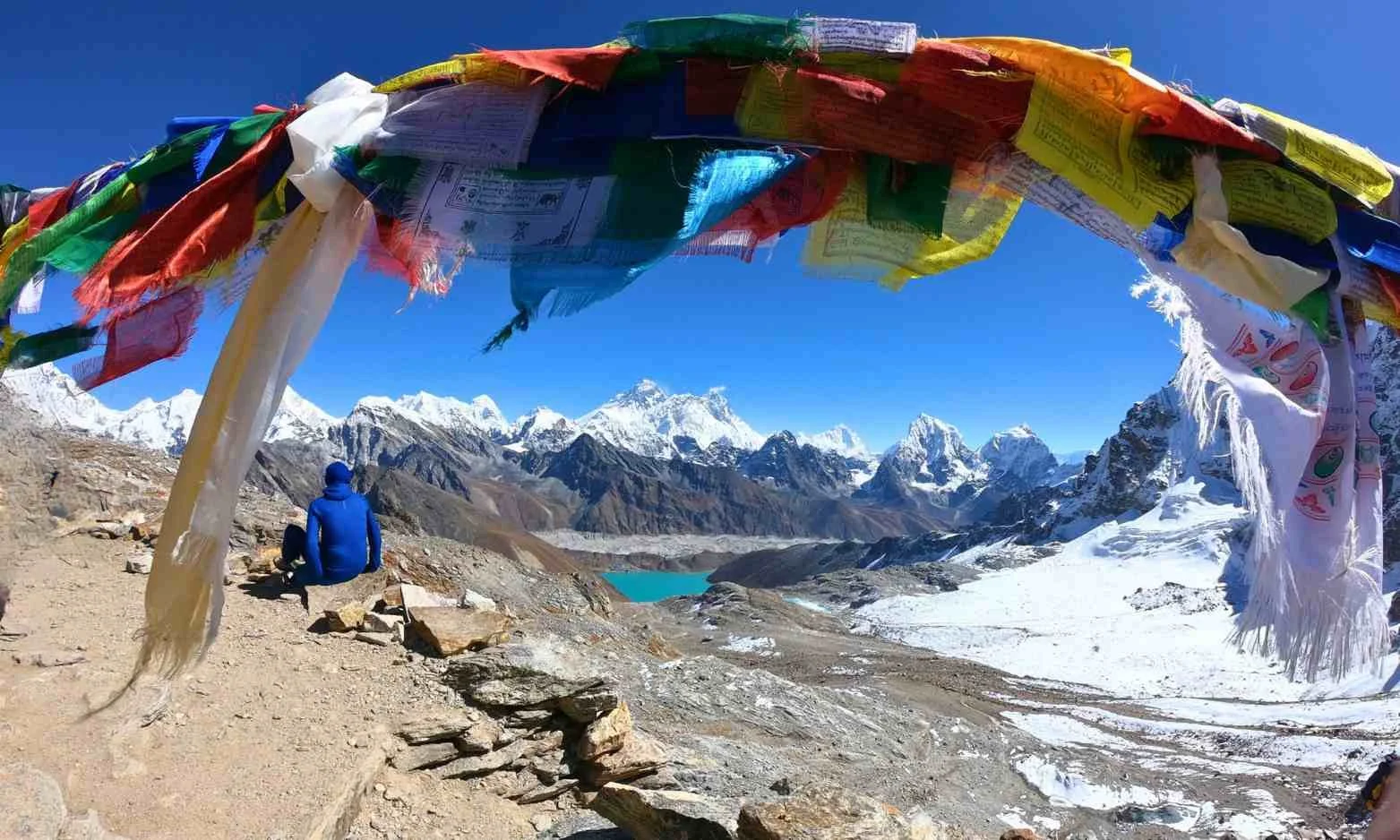Explore Gokyo Lake:
A Serene Trek in the Heart of Everest
Overview of the Gokyo Lakes Trek
Nestled in the majestic Khumbu region of Nepal, the trek to Gokyo Lake stands out as an adventure that takes one off the beaten paths and into the heart of the Himalayas. The allure of Gokyo Lakes Nepal is not just its azure waters mirrored against the sky but the haven of tranquillity it offers amidst dramatic landscapes. As a crucial highlight of the Gokyo Lakes trek in Nepal, ascending Gokyo Ri serves as a pivotal moment, unveiling a sunrise panorama over the Everest range that is as unforgettable as it is serene.
Itinerary for the Gokyo Lakes Trek
The journey begins with a flight from Kathmandu to Lukla, where trekkers embark on a path leading to Namche Bazaar. Known as the gateway to the high Himalayas, Namche Bazaar is not only a bustling trade hub but also a stage for acclimatisation.
From here, the route veers towards the Gokyo Valley, following the serene Dudh Kosi River to the enchanting Gokyo Nepal. The itinerary is crafted to allow ample time for exploration—be it witnessing the ethereal beauty of sunrise from Gokyo Ri or venturing towards the secluded Renjo La pass.
The descent incorporates a rejuvenating stop at Thame, rounding off the trek as adventurers loop back to Lukla and then Kathmandu.
Day 01 Arrival Kathmandu; pick up International Airport Kathmandu
Day 02 Final Gokyo Lake trek preparations in Kathmandu
Day 03 Flight Kathmandu to Lukla (0,5 hrs.) and trek to Phakding (2640 m – 3 hrs.)
Day 04 Trek to Namche Bazaar (3440 m – 5 hrs.)
Day 05 Resting day at Namche Bazaar for acclimatization. Optional day hike to the Everest View hotel
Day 06 Trek to Dole (4200m – 6 hrs.)
Day 07 Trek to Machermo (4470m – 5 hrs.)
Day 08 Trek to Gokyo Lake Nepal (4800m – 5 hrs.)
Day 09 Day hike to the Fifth Lake (5200m) overnight at Gokyo (6 hrs.)
Day 10 Ascend Gokyo Ri (5483m) and return to Gokyo Lake (5 hrs.)
Day 11 Cross the Renjo La pass (5344 m) and trek to Lungdhen (4380 m – 7 hrs.)
Day 12 Trek to Thame (4200 m – 5 hrs.)
Day 13 Resting day in Thame with an option to visit Thame Monastery
Day 14 Return trek to Namche Bazaar (3440 m – 5 hrs.)
Day 15 Trek to Lukla (2840 m – 6 hrs.)
Day 16 Flight Lukla to Kathmandu (0,5 hrs.)
Day 17 Free day in Kathmandu for personal exploration or relaxation.
Day 18 Departure day; drop off International Airport Kathmandu
The Gokyo Lakes Trek Map
To facilitate your preparation for the captivating Gokyo Lakes trek, we offer an accessible basic map on our website. This map is thoughtfully designed to provide a clear overview of the Gokyo Lake trek, highlighting the awe-inspiring journey through the Everest region.
While it outlines significant landmarks, the undulating terrains of the Gokyo Valley, and the routes towards the storied heights of Gokyo Ri and Renjo La pass, its purpose is to give you an initial sense of what awaits. It serves as a preliminary guide, inviting you to envision the path ahead as you embark on the Gokyo trek.
This map, though basic, is an essential tool in planning your journey, encouraging deeper engagement with the unique geography and rich culture that define this Himalayan adventure.
Altitude Considerations in the Gokyo Valley
The altitude of the Gokyo Lakes trek surpasses 5,000 meters, with significant landmarks such as Gokyo Ri and the Renjo La pass marking the journey's high points. Understanding the challenges posed by such elevations, we prioritise acclimatisation and well-being through strategically planned rest days.
This careful pacing ensures a comfortable ascent within the Gokyo Valley, safeguarding against altitude sickness and fostering a deeply personal connection with the natural grandeur encountered along the way.
Selecting the Best Season for
Your Gokyo Trek
Timing is pivotal, and to experience the Gokyo Lakes trek at its best, we recommend visiting during the spring (March, April, May) or autumn (October, November) months. These periods are characterised by clear skies and mild temperatures, ideal conditions that elevate the trekking experience.
Our deep-rooted understanding of the local climate plays an instrumental role in aligning your adventure with the most favourable weather, optimizing your passage through Gokyo Nepal's remarkable landscape.
What's Included and Not Included in the Gokyo Lake Adventure
The cost of the Gokyo Lakes trek is dynamic and reflective of trekking seasons, group sizes, and additional logistics. A starting price is provided, with fluctuations expected based on the specific demands of the trekking period.
What’s Included:
· Airport transfers between Kathmandu International Airport and your hotel.
· Round-trip flights from Kathmandu to Lukla, with airport transfers included.
· Four nights in a Kathmandu hotel (Thamel area) with breakfast.
· Thirteen nights in teahouse accommodations during the Gokyo trek.
· Three daily meals (breakfast, lunch, and dinner) throughout the trek.
· Services of a licensed, certified, and English-speaking mountain guide.
· Porter service (one porter for every two trekkers, maximum luggage weight 10 kg per person).
· Comprehensive support for our guide and porter team, including salary, food, lodgings, and insurance.
· Complimentary use of a waterproof luggage bag.
· Entry fees for Sagarmatha National Park, TREK card, and applicable local taxes.
· Backing from the Sherpa Heritage Trails head office in Kathmandu to support your journey.
What’s Not Included:
· International airfare to Nepal.
· Nepal visa on arrival.
· Lunches and dinners in Kathmandu.
· Expenses for beverages, hot showers, internet services, laundry, and battery charging during the Gokyo trek.
· Personal travel insurance.
· Charges for rescue operations in emergencies.
· Any additional costs due to itinerary changes, such as flight delays or natural calamities.
· Tips and gratuities for your guide and porter.
Our commitment is not just to guide you through the breathtaking landscapes of Gokyo Valley, Gokyo Ri, and Renjo La pass but to ensure a journey that resonates deeply with the spirit of exploration and genuine connection with Nepal’s cultural and natural treasures.





